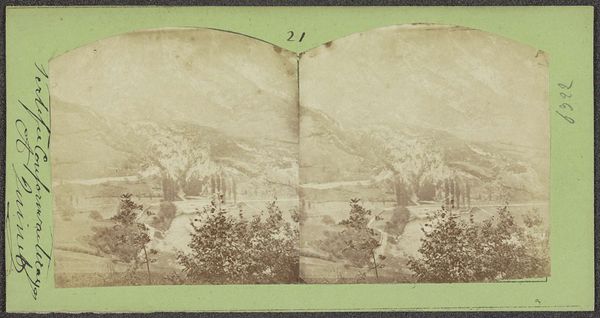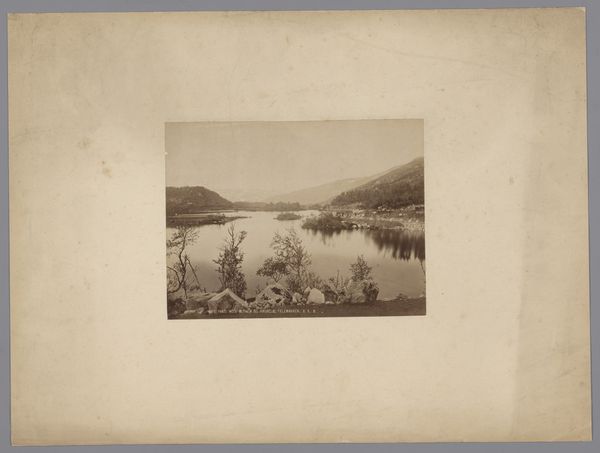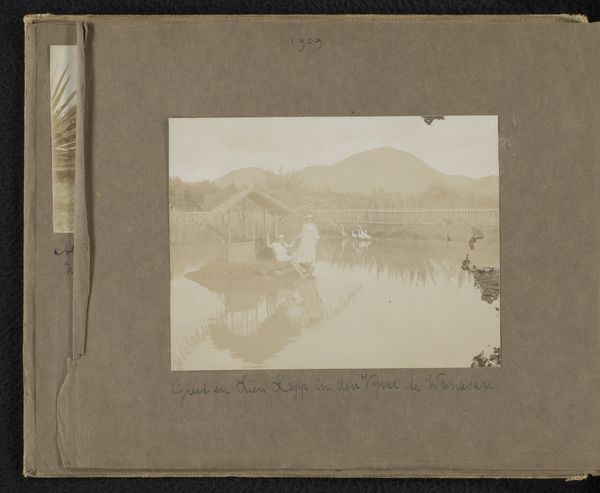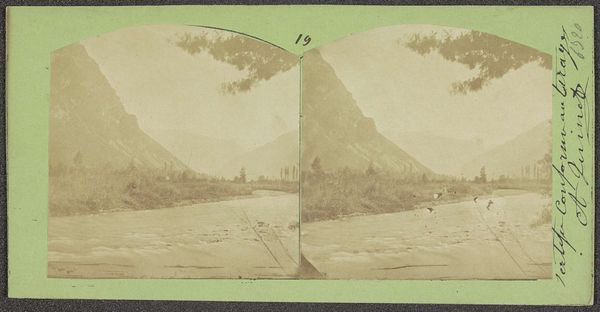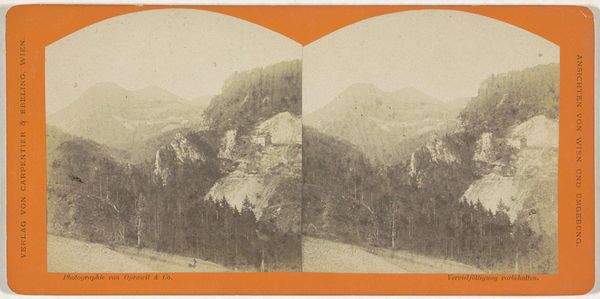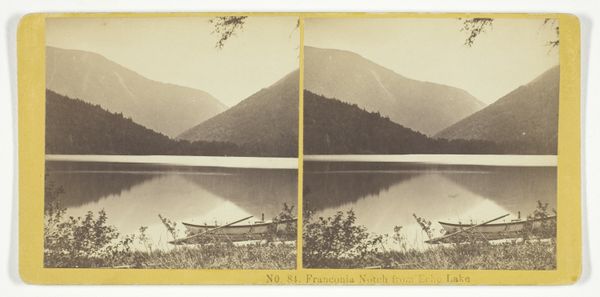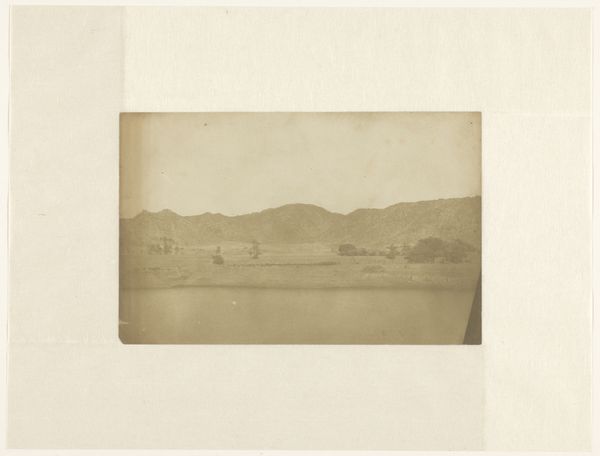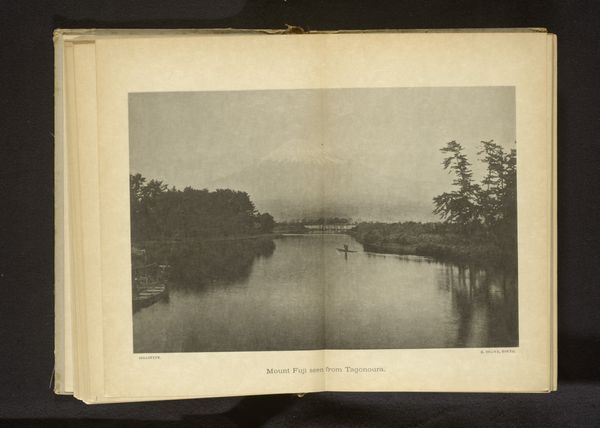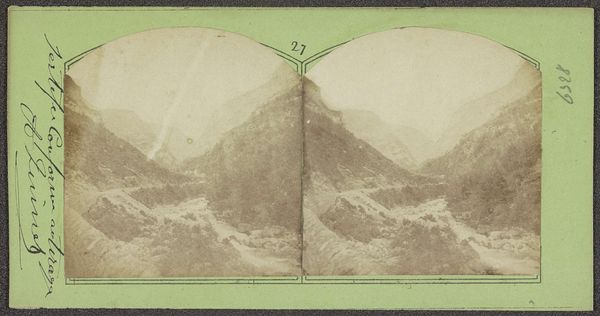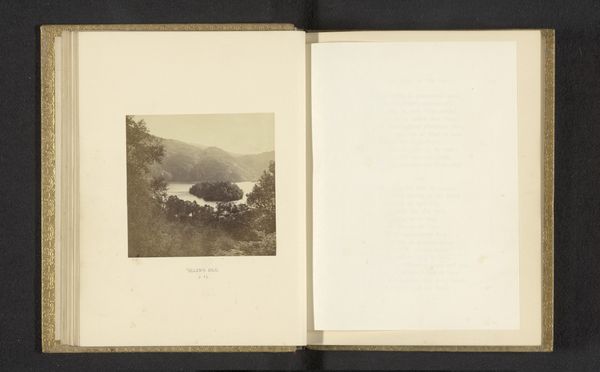
photography, gelatin-silver-print
#
lake
#
landscape
#
photography
#
gelatin-silver-print
#
realism
Dimensions: height 85 mm, width 170 mm
Copyright: Rijks Museum: Open Domain
Curator: E. Soule captured "Gezicht op het Lac des Quinconces," sometime between 1860 and 1880. This gelatin-silver print is a stereoscopic view, inviting viewers into a landscape seemingly suspended between water and sky. Editor: My first impression is one of profound tranquility. The muted tones, almost monochromatic, create a scene that's both calming and a little eerie. The building submerged in water, with that cluster of trees around it, evokes a sense of melancholy. Curator: Considering it’s a gelatin-silver print, we have to look at the chemistry involved – how the light interacts with the silver halides on the gelatin layer. This determined the tonal range achievable and speaks to the advancements in photographic processes making images like this accessible to a wider public. Furthermore, stereoscopic photography became incredibly popular for tourism, enabling a global audience to "visit" these places without actually being there. Editor: And what a scene to visit! The lake is acting almost like a mirror. It’s as if the submerged structure—could it be some sort of bathing house?—is both there and not there. The submerged house calls to mind stories of lost cities and drowned memories; what happened here, what’s this about. It’s interesting also to consider the symmetry—two hills balancing the two halves of the picture, creating this quiet space in between. Curator: Precisely, it documents how access to bathing changed society, not just for health but also for leisure and commerce. And look closely at how Soule framed the trees, especially on that central structure in the water. It invites analysis, that this choice served practical purposes during development, in terms of achieving an ideal composition in these early methods. This would require considerable expertise to process with specific materials and production values to present at this stage in photographic process. Editor: It's evocative of the ephemeral, a constant reminder of the passage of time, that nothing is permanent. I am left contemplating the building, a silent sentinel standing against time's relentless current. Curator: Indeed, viewing it through that materialist lens brings focus back to the processes through which this image has been produced to serve cultural and historical processes in Europe during this period. Editor: And those hidden and drowned stories it implies. Curator: A merging of those ideas together make for powerful results.
Comments
No comments
Be the first to comment and join the conversation on the ultimate creative platform.

